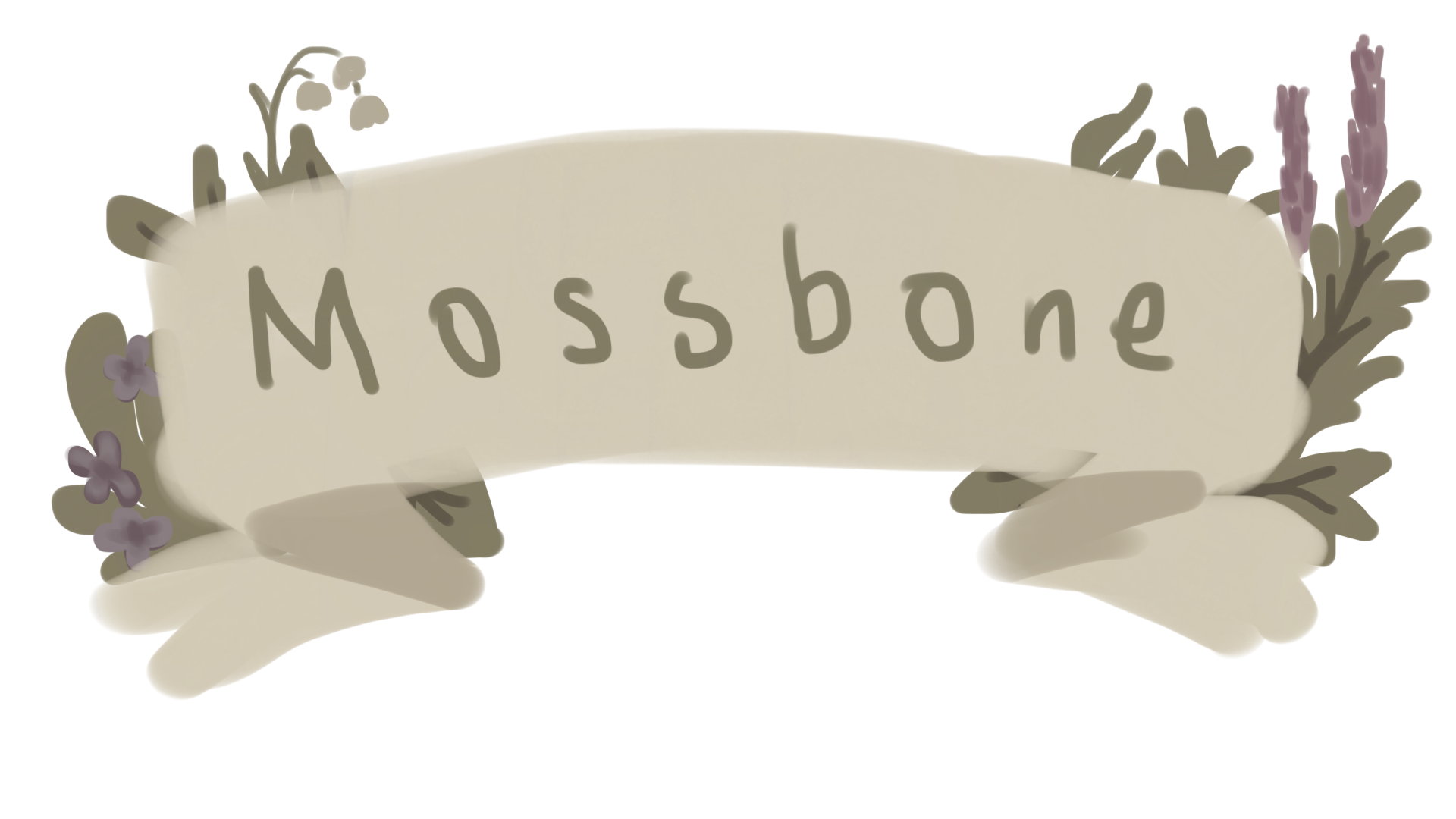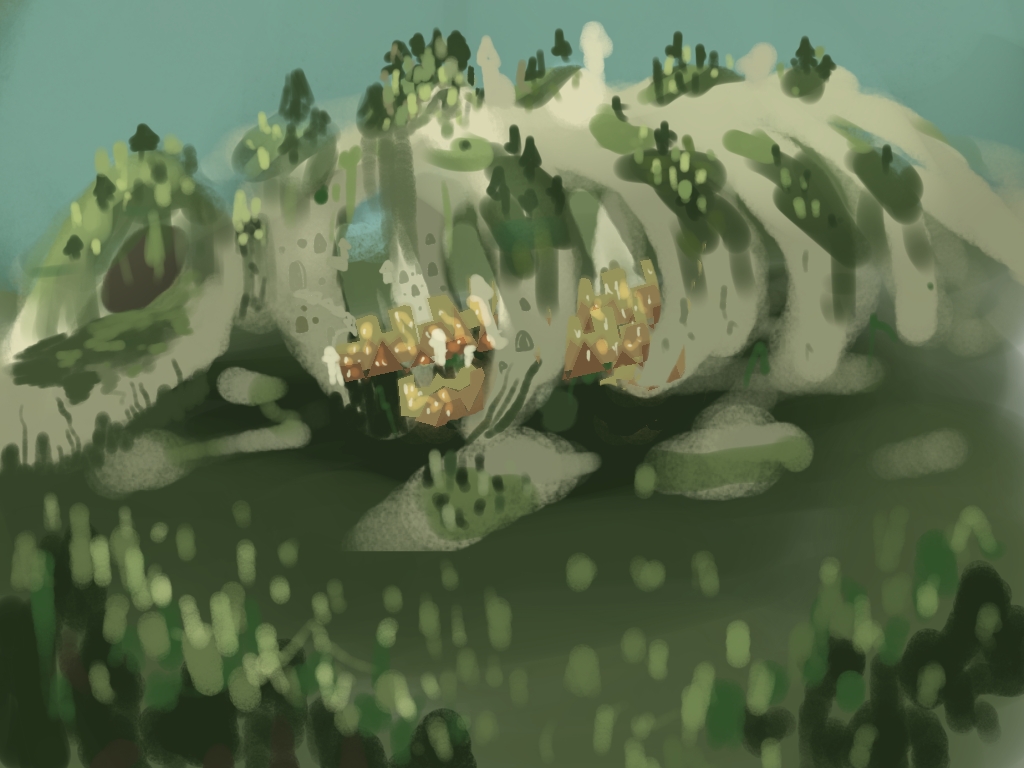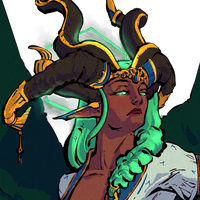Mossbone
"In a sense that great beast is still alive. I mean– it is dead, in the sense that it will never walk the earth again, but even after its death, life continues to grow from its body. The great moss forests live on its bones, and an entire city has sprung on its corpse. Most people would look at it and say that it was alive, perhaps even more alive than when it could still walk the earth."
Deep in the forests of Reverie lies the skeleton of a great ancient beast. What it was in life was unknown, but in death it has become a home to so much. The mosskin and flowerkin live in the forests filled with moss and wild nature grows on its long dead bones. The bonekin have carved their homes into the skeleton of the giant beast, and humans have built buildings and villages in the bosom of the monster. What once was a rotting corpse is now a great city and forest home to both fey and humans alike. What once was just a skeleton is now the city of Mossbone. There is no primary ruler of Mossbone, although it was created by Mother Moss. As a result, the moss children are the most populous group within mossbone. Other nature fey such as flowerkin and forest folk, started inhabiting Mossbone due to its lush vibrant forests. Shroomkin also inhabit the bones and forests of Mossbone, having a symbiotic relationship with many if the forest fey. The exact time of when the bonekin moved into Mossbone is vague, but since they mostly live within the bones of the ancient beast, most of the mosskin and bonekin coexist without trouble. The influx of human refugees during the age of slumber brought with them their human cultures. This made the human settlements of Mossbone a cultural melting pot. As a result, Mossbone's culture is mixture of numerous human and fey tradition, creating a unique blend of cultures, many of which were almost lost in the Age of Slumber.
Human Cultures
Most of the humans in Mossbone hail from the ruined kingdoms of Somnus and Meriun. Both of the kingdom's cultures have blended together over time creating a new unique human culture within Mossbone.Meriun
The people of the kingdom of Meriun, had many merchants and sailors. Its territory reached all the way to what is now Bellerind. The capital of Meriun was Meti, a city of trade named after the moon goddess Meti, which itself was made up of numerous different cultures. When people fled from Meriun, they brough with them their most precious and sentimental possessions. Merunian culture is vibrant and diverse, with flavorful sea-based cuisine, and rich in cultural art forms. Although Mossbone is far from the ocean, Merunians brought with them their spices, adding flavor to the meat of the fauna that lived in the surrounding forests. Most Merunian artforms, such as traditional dance, music and performance arts, survived with their people and spread to the rest of Mossbone. The Merunians also brought their deities such as Emetita, goddess of wealth and Meti, the moon goddess, and small temples can be seen dedicated to their gods at the edge of the city.Somnus
Much of the culture of Somnus was lost over time, but its people, the Somni, were able to preserve little bits and pieces of tradition, such as their pottery, sculpture and weaving. The Somni also brought with them their religions which worshipped the Dreaming Pantheon, which eventually ended up incorporating both Emetita and Meti into their pantheon. The Somni also brough much of their agriculture and horticulture which included many varieties of fruit and herbs, which ended up being used in Merunian cuisine.Fey Culture
I would be hard pressed to find a place as vibrant and lively as here. I've never seen quite so many fey live with humans
Mosskin
The mosskin are generally passive fey. They do not worship any gods, besides the Moss Mother, but their culture has adopted the performing arts of the Merunians. The mosskin have created many plays and dances that diverge from traditional Merunian theatre. Most of the mosskin carve into stone tablets for their writing. The mosskin also have their own ancient art in the form of sculpture and carvings which have influenced Somni art. Depictions of Mother Moss can be found throughout Mossbone, carved into many of the older buildings and architecture. The mosskin also have their own traditional music, much of which has fused with Merunian music. Gentle melodic woodwinds from the mosskin, along with the light syncopated percussions made from stone instruments are the defining features of mosskin music. This combined with the light ringing Merunian bells and high airy singing style of the Merunian people, creates a beautiful blend of music unique to Mossbone.Flowerkin
The flowerkin of Mossbone have mostly merged with mosskin culture. However, dances and performances of the flowerkin are still very much present on Mossbone. Many flowerkin have grown close with the human cultures of Mossbone, closer than the mosskin. Many flowerkin even worship the Dreaming Pantheon (although the Dreaming Pantheon is slightly different to the flowerkin, with all five deities being equal)Bonekin
Many humans fear the bonekin, because most have frightful appearance, but the humans of Mossbone have learned to befriend the bonekin. Much of the bonekin are kind towards the humans of Mossbone, and influence human culture and art greatly. From architecture to sculpture to language, the culture of the bonekin has had a huge influence on both the humans and fey of Mossbone.Districts
The city of Mossbone is divided into four districts, determined by the skeleton of the ancient beast. The skull caverns, located inside and on the skull of the great beast is home mostly to mosskin and shroomkin, as well as a few of the bonekin. This part is mostly inaccessible to humans, though there are no real restrictions preventing them from visiting. The Inner Ribs, located inside the chest and stomach cavities of the great beast. Theatres, stages and entertainment districts are found throughout the Inner Ribs. The stomach cavity is home to most human settlements, along with bonekin architecture built on the ribs themselves. The Outer Ribs, or the Mossy Forest is located on top of the spine of the great beast, as well as outside the ribs of the skeleton. It is home to mosskin, flowerkin, forest folk and as well as bonekin architecture at the highest points (the spine).This is also where much of the food forests lie. Finally the Tail Market is located at the tail of the beast, where numerous shops and human settlements lie.History
The skeleton of the ancient beast has lay there for hundreds of generations. It has been dead for so long, that most people forget that it was ever alive. During the beginning of the Age of Slumber, the great corpse was visited be the Moss Mother. From her touch great forests grew on the bones of the long dead beast, and some mosskin made their home there. Over time, the lush gardens attracted more and more of the fey, creating what was essentially a small fey kingdom. The bonekin built their homes in the bones of the giant beast and many nature fey started building homes in the flora on and around the skeleton. As many human kingdoms fell to ruin during the Age of Slumber, many small communities fled from their cities and villagees. Some of the refugees found their way to Mossbone, where they built settlements at the edge of kingdom. Over time, the humans became more and more integrated with the fey, until both communities essentially merged.
Remove these ads. Join the Worldbuilders Guild














Love this! The quote at the beginning is a lovely line to draw people into your world. Mossbone reminds me of how fish may the remains of whales their homes after they've died. :) Pretty awesome that it's such a diverse city, too. How did they come to be so well integrated with each other?
Thank you! The idea of an ecosystem forming after a whale died was actually a huge inspiration when I was making Mossbone. I think one of the reasons they've become so well integrated are the different groups' dependence on each other. Cooperation was key to ensure the survival of both the humans and fey of the city.
Hiya, ToothGardener! I'm not sure if you were on the WorldEmber event stream today, so I figured I would leave a comment to let you know: congratulations! You are the winner of the Settlement special category! Claim your prize here: https://www.worldanvil.com/learn/events-showcase/we23-winners.
Thank you for letting me know!